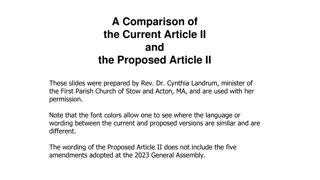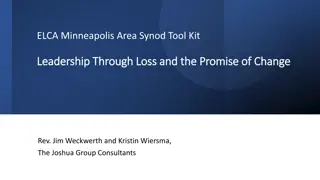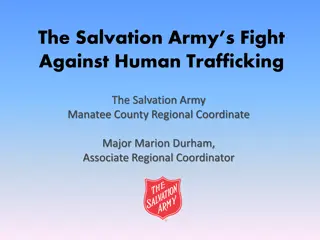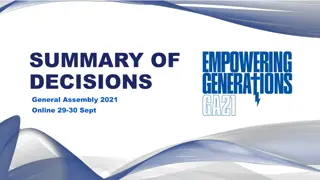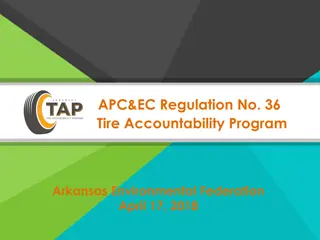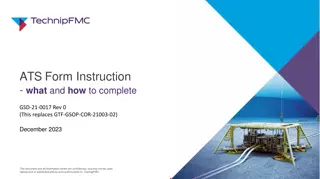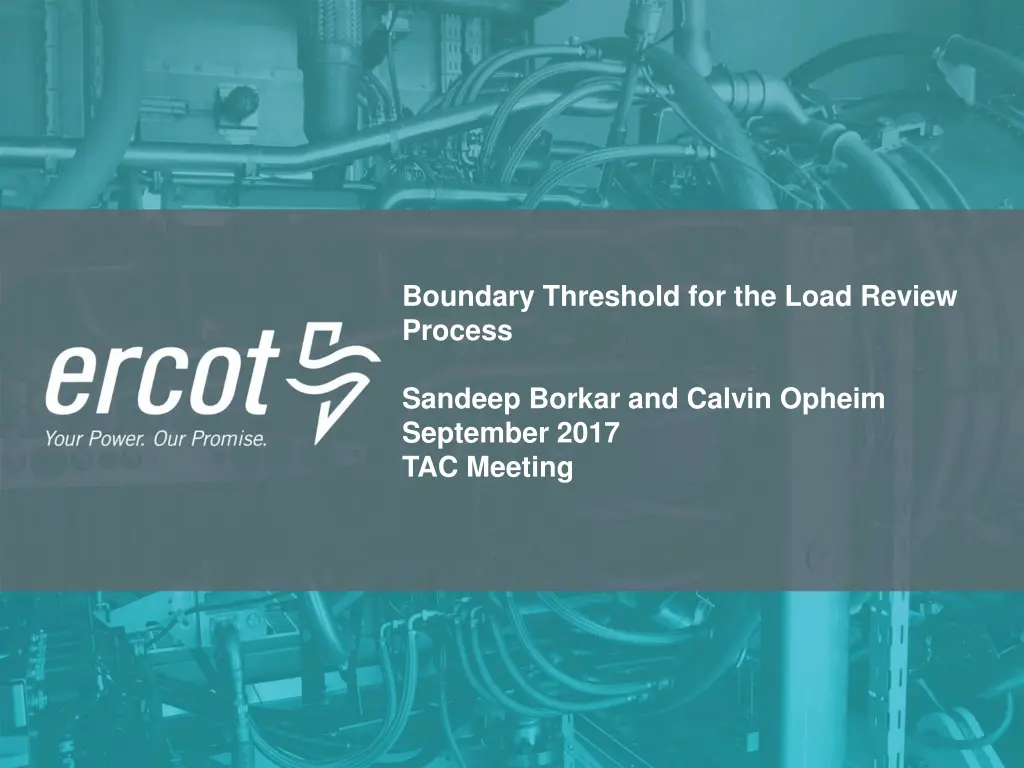
ERCOT Boundary Threshold for Load Review Process
"Learn about ERCOT's proposed boundary threshold of 5% for load review process based on historical data and stakeholder feedback. Explore the rationale behind the threshold and its application in load forecasting and review processes."
Download Presentation

Please find below an Image/Link to download the presentation.
The content on the website is provided AS IS for your information and personal use only. It may not be sold, licensed, or shared on other websites without obtaining consent from the author. If you encounter any issues during the download, it is possible that the publisher has removed the file from their server.
You are allowed to download the files provided on this website for personal or commercial use, subject to the condition that they are used lawfully. All files are the property of their respective owners.
The content on the website is provided AS IS for your information and personal use only. It may not be sold, licensed, or shared on other websites without obtaining consent from the author.
E N D
Presentation Transcript
Boundary Threshold for the Load Review Process Sandeep Borkar and Calvin Opheim September 2017 TAC Meeting
Agenda Background Recommendation Process overview Next steps PUBLIC 2
Background After several deliberations at the PLWG and the RPG new language was approved for Planning Guide section 3.1.7 via PGRR 42. PG section 3.1.7 specifies the process used for determining Load level used in start cases for the Regional Transmission Plan (RTP) and Tier 1 independent review PG section 3.1.7 (f) requires that ERCOT-proposed revisions to the boundary threshold used to implement the requirements of this section will be recommended by the Technical Advisory Committee (TAC) and approved by the ERCOT Board. PUBLIC 3
Recommendation ERCOT proposes a boundary threshold of 5% be utilized This number is based on experience from the load review dry run in 2017 RTP experience forecasting loads for the ERCOT region and review of historical differences The 5% threshold was proposed for the trial run at the January 2017 RPG meeting RPG stakeholders were neutral on this proposal 4 PUBLIC
Load Forecast Review Process Justified? RTP Load Level RTP Load Level Bound Bound 5% 5% SSWG Load Level SSWG Load Level ERCOT 90th percentile ERCOT 90th percentile ERCOT 90th percentile SSWG Load Level Forecast Forecast Forecast RTP: Loads compared by weather zone Tier 1 RPG review: Loads compared by TO (if necessary) PUBLIC 5
RTP/Tier 1 Load Level RTP Load Level RTP Load Level RTP Load Level Bound Bound Bound 5% 5% 5% SSWG Load Level SSWG Load Level SSWG Load Level ERCOT 90th percentile ERCOT 90th percentile ERCOT 90th percentile SSWG Load Level Forecast Forecast Forecast PUBLIC 6
Results from the load review dry run Results from Load Review Dry Run 2 2 2 3 4 2 Weather zones where SSWG Load is within 5% boundary Weather zones identified for load review using 5% boundary Weather zones where SSWG load < ERCOT 90/10 forecast PUBLIC 7
Conclusion & Next steps ERCOT has developed procedures that will be used to review load forecasts The goal is to ensure that ERCOT is comfortable with the load forecasts ERCOT is appreciative of the support provided by TSPs Seek TAC recommendation and Board approval on the proposal to use 5% as the boundary threshold PUBLIC 8
Questions Sandeep Borkar Sandeep.Borkar@ercot.com 512-248-6642 Calvin Opheim Calvin.Opheim@ercot.com 512-248-3944 PUBLIC 9
Appendix PUBLIC 10
Bounded higher-of methodology (Conceptual) SSWG Loads Calculated by Weather Zone Remove self- served loads Compare weather zone load levels WZ load from SSWG < ERCOT 90th Percentile Use ERCO 90th (add self-served) Y N Use ERCOT 90th + X% (add self- served and justified additions) ERCOT 90th percentile summer peak load forecast by Weather Zone Remove Losses and add any known differences WZ load from SSWG > ERCOT 90th + X% Y N Use SSWG Loads Load share for each TO within the weather zone is determined based on that TO s share of the most recent summer peak. Loads for TO s inside this WZ, but within the X% bounds would be retained from SSWG cases. PUBLIC 11
Load review process (Conceptual) Develop RTP start cases using the bounded higher-of load level TAC/Board approves the X% bound for RTP Load level Post preliminary RTP start cases for review Stakeholder review passed? RTP start case load levels finalized Y N ERCOT staff to review the rationale and update RPG on any changes to load levels Stakeholder provides rationale for valid differences Rationale: Historic load growth Committed load additions Forecast methodology Past forecast performance Special circumstances Other? Preliminary RTP start cases will be shared to allow TDSPs to review the impact of load distribution on pockets within the weather zones. PUBLIC 12
Planning Guide 3.17 Reference [PGRR042: Insert Section 3.1.7 below on January 1, 2018:] 3.1.7 Steady State Transmission Planning Load Forecast (1) ERCOT shall use the following process for determining the Load level to be used in the starting base cases for the Regional Transmission Plan and in the steady-state evaluation of a Tier 1 project pursuant to Protocol Section 3.11.4, Regional Planning Group Project Review Process: (a) ERCOT will compare the ERCOT 90/10 Load forecast with the summed SSWG bus-level Load forecast for each Weather Zone. (b) If the ERCOT 90/10 Load forecast is higher, ERCOT will use this forecast for the Weather Zone. (c) If the SSWG Load forecast is higher than or equal to the ERCOT 90/10 Load forecast, but below the ERCOT 90/10 Load forecast plus a boundary threshold determined in accordance with paragraph (f) below, ERCOT will use the SSWG Load forecast for the Weather Zone. (d) If the SSWG Load forecast is higher than or equal to the ERCOT 90/10 Load forecast plus the boundary threshold, ERCOT will use the ERCOT 90/10 Load forecast plus the boundary threshold for the Weather Zone. PUBLIC 13
Planning Guide 3.17 Reference (Cont.) (e) If a TSP(s) believes that the ERCOT 90/10 Load forecast plus the boundary threshold does not adequately represent the Weather Zone or an area within the Weather Zone, the TSP(s) may present ERCOT with additional information to justify using a higher Load forecast, including the SSWG Load forecast, for that Weather Zone. ERCOT, in its sole discretion, may choose to use a higher Load forecast than indicated in paragraph (d) above if it reasonably determines that the Load forecast indicated in paragraph (d) above does not adequately represent the Weather Zone or an area within the Weather Zone. If ERCOT uses a Load forecast higher than the ERCOT 90/10 Load forecast plus the boundary threshold in the evaluation of a Tier 1 project, ERCOT must explain and document the basis for that choice, using aggregated information as needed to shield Protected Information, in its independent review. (f) ERCOT-proposed revisions to the boundary threshold used to implement the requirements of this section will be recommended by the Technical Advisory Committee (TAC) and approved by the ERCOT Board. PUBLIC 14



